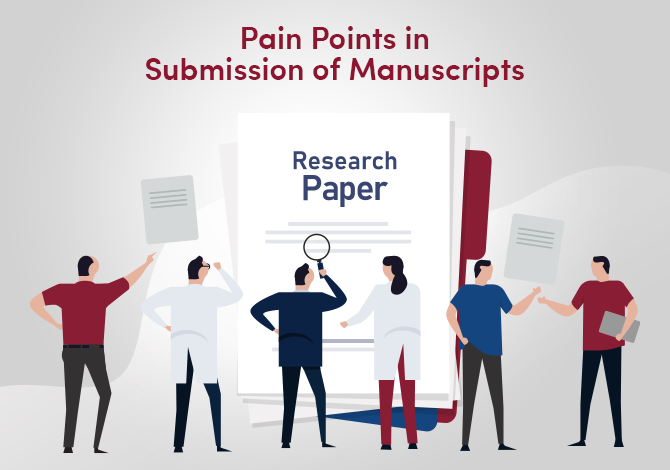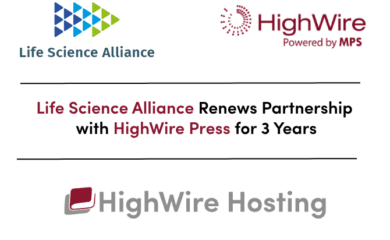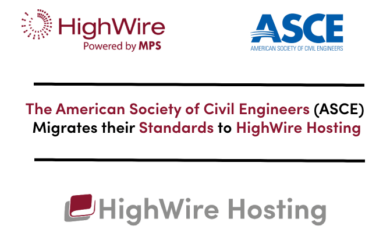Lengthy and complex submission processes
Submitting a manuscript can be a tedious and time-consuming task, often involving multiple steps and requirements. From filling out lengthy forms to formatting the document according to specific guidelines, the submission process can be overwhelming for authors. Additionally, some journals may have complex submission systems that require authors to navigate through various tabs and sections. These lengthy and complex submission processes can deter authors from submitting their work or lead to mistakes in the submission.
Many authors struggle to understand what exactly is expected of them and how they should format their manuscript for submission. Without clear guidelines, authors may be unsure about the required file format, word count limitations, citation style, or even the specific sections that need to be included in their manuscript. This uncertainty can result in multiple revisions and wasted time trying to meet unknown expectations.
Inconsistent formatting requirements across different journals
One major pain point in the submission of manuscripts is the inconsistent formatting requirements across different journals. Each journal has its own set of guidelines and specifications for manuscript formatting, making it difficult for authors to adhere to a standard format. Some journals may require specific font styles, font sizes, line spacing, margin sizes, and referencing styles, while others may have completely different requirements. This inconsistency can lead to confusion and extra work for authors who have to modify their manuscript multiple times to meet the specific requirements of each journal they wish to submit to.
Difficulties with online submission platforms
In today’s digital age, most journals have embraced online submission platforms as a convenient way for authors to submit their manuscripts. However, these platforms can sometimes become a pain point due to various technical difficulties or usability issues.
Authors often face challenges in navigating these online submission platforms, especially if they are not user-friendly or lack clear instructions. Uploading documents, filling out forms, and selecting appropriate categories can be cumbersome tasks that can easily cause frustration and confusion. Moreover, technical glitches or slow response times from the platform can further exacerbate the pain points in manuscript submission.
Many journals still rely on outdated systems or manual processes, making it difficult for authors to keep track of the status of their submissions and manage revisions effectively. Without a proper tracking system in place, authors often find themselves in a state of uncertainty, not knowing if their manuscript has been received, under review, or even rejected. This lack of transparency can lead to frustration and delays in the publication process.
Additionally, the traditional method of revising manuscripts involves exchanging multiple versions of the document with reviewers and editors via email or physical copies. This process can be time-consuming, prone to errors, and difficult to manage, especially when there are multiple revisions involved.
Unclear communication regarding submission status and timeline
Submitting a manuscript to a journal can be an exciting yet nerve-wracking process for researchers and authors. However, one of the major pain points in this journey is the lack of clear communication regarding the submission status and timeline. Authors often find themselves in a state of uncertainty, not knowing whether their manuscript has been received, reviewed, or even accepted for publication. This ambiguity can lead to frustration and anxiety, making the submission process more challenging than it needs to be.
Insufficient support or guidance for first-time authors
Submitting a manuscript can be an overwhelming task for any writer, especially for those who are venturing into the publishing world for the first time. The lack of clear instructions, confusing submission guidelines, and limited resources can make it difficult for aspiring authors to navigate through this crucial stage.
Without proper support and guidance, first-time authors may feel lost and unsure about how to proceed with their submissions. They may struggle to understand what publishers are looking for or how to effectively present their work.
Language barriers for non-native English speakers
Language barriers can pose significant challenges for non-native English speakers when it comes to submitting manuscripts for scholarly publishing. These pain points can range from difficulties in expressing ideas clearly and concisely to grappling with complex grammar and syntax rules.
Moreover, navigating through the intricate grammar and syntax rules of the English language can be overwhelming. Non-native English speakers often struggle with sentence structure, verb tenses, articles, prepositions, and word order, which can lead to confusion and inaccuracies in their manuscripts.
Another pain point is the lack of confidence in writing fluently in English. This lack of confidence may stem from a fear of making grammatical errors or being judged for their language proficiency. As a result, non-native English speakers may hesitate to submit their work or may spend excessive amounts of time revising and editing their manuscripts.
DigiCorePro
HighWire Press in partnership with MPS Labs are developing the next generation publishing workflow solution based on the principles of single source publishing, a methodology that puts scholarly content at the center of the publishing process, reducing inefficiencies and increasing the speed of delivery. This new publishing system provides editorial services in an automated and customizable way, from article concept to publication. It supports content authoring, online submission, editorial and peer review tracking, post acceptance production tracking, and delivery to hosting platforms and print services.
Benefits of Single-Source Publishing
Single source publishing is a proven methodology. MPS has been pioneering the single source publishing model for years, utilizing our XML conversion system DigiXML, our XML editing platform DigiEdit, our auto-composition tool DigiComp, and the other workflow tools that make up our DigiCore workflow system. Single source publishing, and the underpinning mechanisms of content extraction and XML conversion, provide efficiencies to the publishing process such as:
- Simplifies manuscript submission for researchers
- Automates formatting and quality checking for staff
- Provides interactive peer review for editors and reviewers
- Reduces errors due to file and metadata mismatches
- Streamlines metadata collection and export
- Processes content faster and more efficiently
- Encourages collaboration between all constituents
- Reduces time from submission to publication
Modular and API Driven
The DigiCorePro system takes advantage of modern modular architecture to allow for innovative microservice integrations, and utilizes APIs for communication between individual modules and with other third-party systems. This architecture has enabled us to easily switch in and out different technology tools or processes, allowing DigiCore clients to easily try new microservices and third-party tools, or alter workflows to accommodate experimental workflow processes.
DigiCorePro is natively:
- Modularized
- API-driven
- Desktop and mobile enabled
- Internationalized
Let’s look at how DigiCorePro can help you handle the aforementioned issues in an efficient manner.
Lengthy and complex submission processes
The product team at HighWire is deeply familiar with the workflow requirements of scholarly journals, books, and other media. This understanding comes from over 20 years of experience working with authors, editors, reviewers, and publishers, understanding their workflow requirements and designing solutions to help speed up article submission, peer review, and editorial processes. From concept to design, the team conducted comprehensive research within the scholarly community and gathered feedback from researchers using existing systems to learn about what they are looking for in a new system. The submission process has been kept as simple and customizable as possible so that authors do not feel overwhelmed while submitting their research paper. Our clever conversion engine, in conjunction with Machine Learning (ML), converts the submitted manuscript into a web-based format, which the author can fine-tune before submitting the proof. AI identifies and generates metadata information available in the document, such as title, abstract, keywords, author information, text count, funder information, and so on.
Lack of clear guidelines and instructions
We recognize that without suitable guidelines and instructions, authors would struggle to understand a system and the various AI-enabled validations involved in each phase of the process. DigiCorePro provides a journal-specific instruction manual for authors and reviewers, which may be accessed without logging in from the journal landing page. It can be accessed via a web browser or downloaded as a manual for future reference. An instruction screen is presented as the initial step in the submission process, and quick help is available for the authors to refer to throughout the process. Each step is checked, and the authors are shown messages indicating how to remedy any issues before continuing. Finally, before submitting the proof, the author can go over all of the information that has been auto-populated or manually entered.
Inconsistent formatting requirements across different journals
We recognize that each journal has its own set of formatting rules that an author must follow when submitting a paper. This is a time-consuming and arduous process, and authors must devote their valuable time to formatting the text. To tackle this, DigiCorePro can automatically apply journal and publisher-specific content formatting. This leaves the author to focus on checking the quality of the content. Our online authoring and proofing tool instantly converts and changes the provided content into XHTML format. It also follows the journal’s formatting rules and uses the recommended stylesheets and fonts during the process.
Tedious manuscript formatting and editing tasks
With DigiCorePro, authors can submit their work without worrying about formatting. Our conversion engine instantly converts the content into machine-readable XML and then displays the manuscript in an editable format that can be accessed via our built-in authoring and reviewing tool. Journals don’t have to worry that authors will disrupt the backend XML, and the user interface allows the author to fine-tune the content before submitting it. Figures and tables incorporated in the paper are automatically changed, allowing the writers to undertake adjustment if necessary. Complex processes, such as citation and bibliography management, can be readily managed using a form-based interface without interfering with the underlying XML.
Unclear communication regarding submission status and timeline
DigiCorePro is a modern system and we strive to make the application both transparent & user-friendly by leveraging the utility and reach of existing products & services. Therefore, apart from standard status emails, we support mobile SMS as well as other popular communication services like WhatsApp, WeChat and Telegram to notify authors (with the blessings of Journal & confirmation from author) about the status of their submitted manuscript.
Difficulties with online submission platforms
To understand the problems of researchers, reviewers, editors, journal employees, and publishers, we undertook a number of discussions while conceptualizing DigiCorePro. From those conversations we undertook to develop an intuitive and user-friendly user experience. We eliminated a substantial amount of data entry performed by authors leveraging artificial intelligence and machine learning, saving them considerable time. We made the application navigation basic and straightforward, with clear instructions and assistance available at all times during the submission process. Authors can benefit from the SSO capabilities thanks to the integration of services like ORCID.
Limited options for manuscript tracking and revision management
We realize that manuscript tracking and revision is an important aspect of the submission process because it keeps authors updated on the status of the manuscript they have submitted. We handled every stage of the workflow, whether it was peer-review, editor decision, or revision request, with full tracking and revision management. The application dashboard allows authors to track the status of their submissions from the start, and as the workflow progresses, the status is updated in real time. If a submitted paper receives a revision request after peer review, authors are notified via email and can also take immediate action via their dashboard. Authors can make their changes directly in the system, using the online editing tool, and the revision history will be recorded and can be accessed via the revision management tool.
Insufficient support or guidance for first-time authors
We understand that the publishers we work with want to support early researchers and first-time authors. Therefore, we have made DigiCorePro as intuitive and as user-friendly as possible. Starting from our login page, we guide users on the pre-requisites as well as various steps of the manuscript submission workflow. The perennial “Help & FAQ” section can be quickly accessed by clicking the user profile on the top right. There is provision (for the journal) to upload informative videos on the author landing page to facilitate user education. Moreover, each action button carries a tool-tip to let the author know the action purpose. Informative pop-ups are also persistent throughout the application to inform authors about errors and their underlying reasons.
Language barriers for non-native English speakers
DigiCorePro is a global product that has been designed and developed to cater to users around the world. The application follows WCAG guidelines including localization support in all the common languages. All the help documents & guidelines can be multilingual, while the labels & other content on the application can be configured in their desired language by the users. Our approach has always been to be user-first!
By Tony Alves



